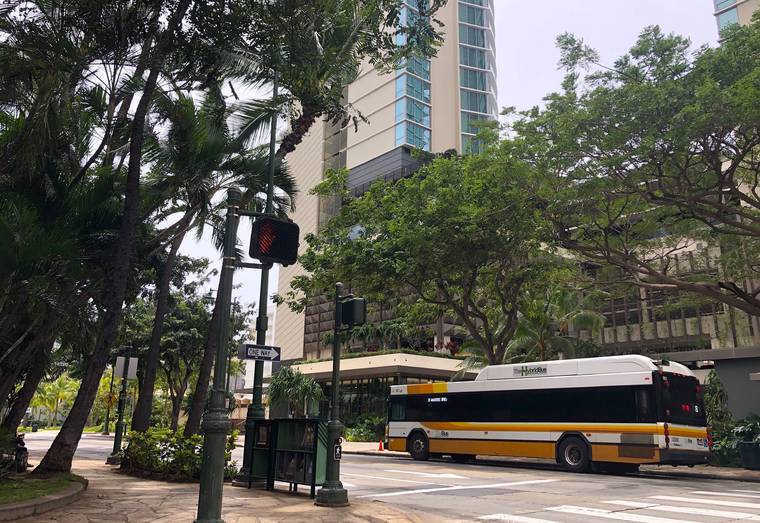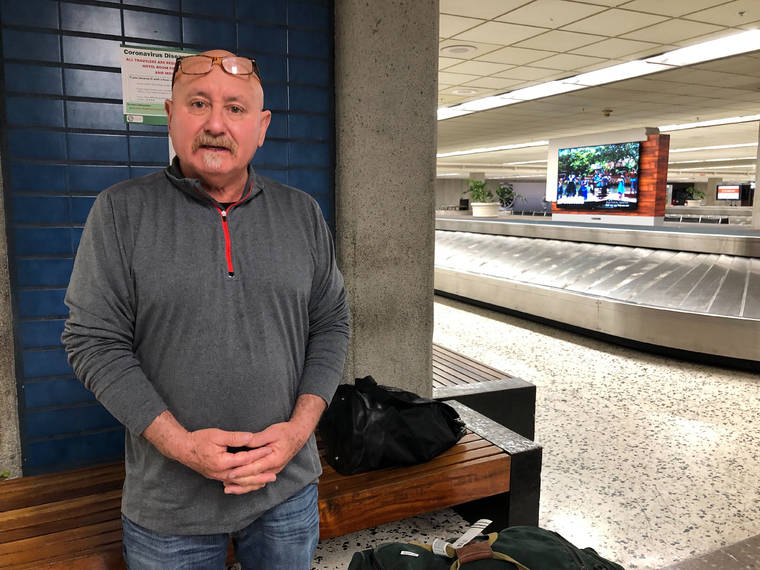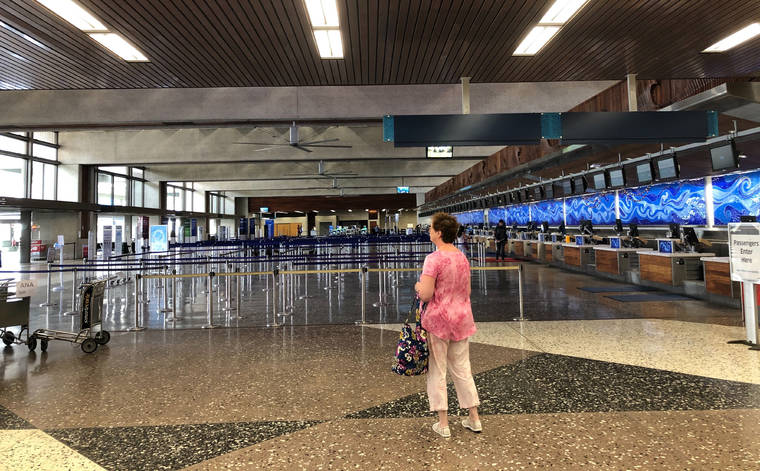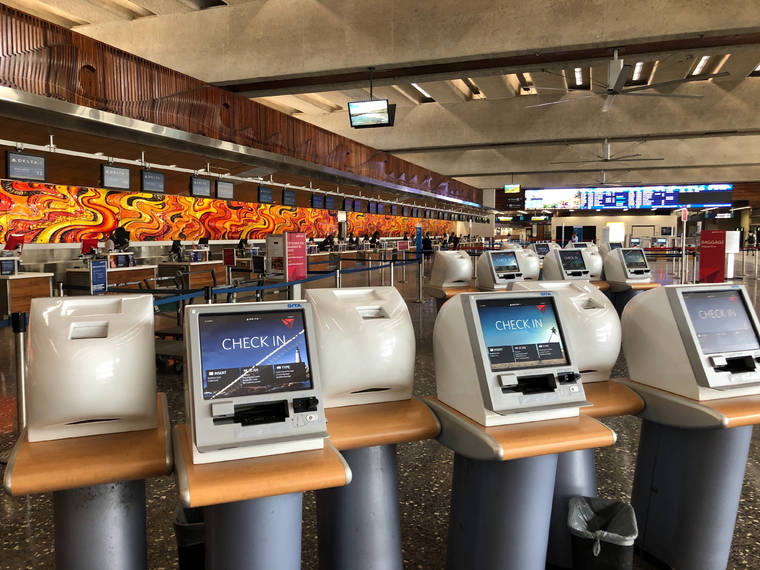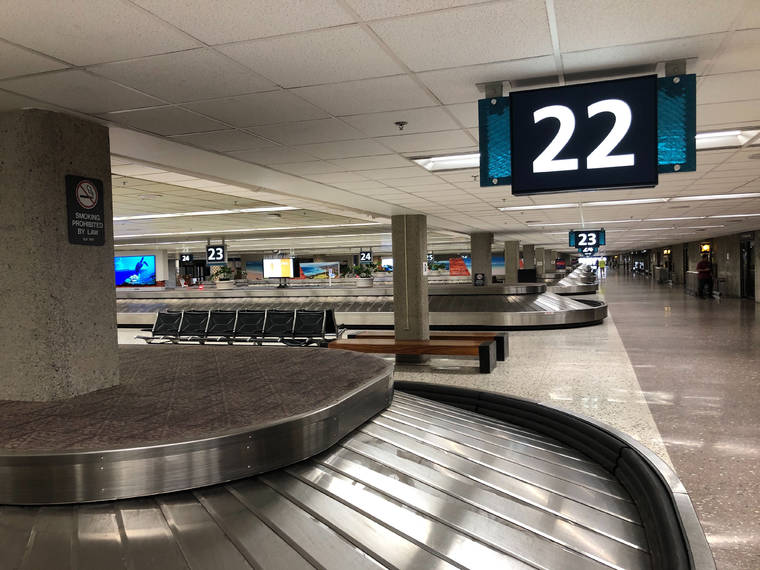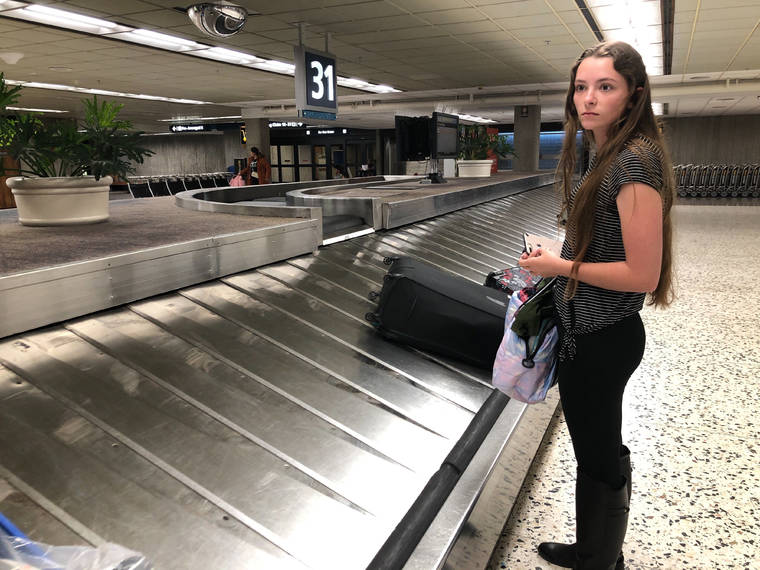HONOLULU — Travelers landing in Hawaii Thursday found a new requirement that they hole up in hotel rooms or their homes for 14 days to fight the spread of the coronavirus.
Most tourists stayed away, having received the message to avoid one of the world’s most popular visitor destinations after Gov. David Ige announced the new quarantine order on Saturday. Most of those collecting bags at the Honolulu airport were Hawaii residents returning home.
Destiny Rohrer, 19, a sailor in the Navy, had visited San Diego to see some friends before they deployed. She plans to spend her quarantine cooking and watching Netflix.
“I don’t mind it. I get to spend time with my dog,” she said.
As of Wednesday, 106 people in Hawaii had tested positive for COVID-19. Most had traveled out-of-state or been exposed to people who had. Of these, seven had to be hospitalized.
There is little for travelers to do even if there was no quarantine, as a statewide shelter-in-place directive took effect on Wednesday.
The city and state have closed beach parks and popular hiking trails. Shopping malls and places travelers like to visit, like the USS Arizona Memorial in Pearl Harbor, have shut down.
Restaurants may only offer takeout, drive-through and delivery service. Sit-down meals at restaurants are prohibited.
“That should put a super wet blanket on any spread,” said Lt. Gov. Josh Green of the quarantine and stay-at-home orders.
Armando Baiza learned of the quarantine when he landed in Hawaii on a flight from San Francisco. The 61-year-old welder came to Oahu for work. His employer knew about the quarantine, and Baiza has people who will shop for him while he stays inside.
“That’s OK. I don’t mind. It’s for everybody’s own good,” he said.
One returning Honolulu resident said she found the process followed by state quarantine workers to be haphazard. Pam Miller-Sofos said the workers made all the passengers coming of her flight from Seattle file into an enclosed space without following social distancing guidelines.
“They kind of herd you in. And I said, ‘Aren’t we supposed to be 6 feet apart?’ And they kind of laughed and handed me a paper and that was it,” she said.
Miller-Sofos supports the quarantine but wishes the state had better procedures for passengers getting off planes.
Ige said the new quarantine rules are a learning experience for everyone.
“This is a brand new procedure and the workers are implementing the quarantine process for the first time. I know that we’ll get better each and every day,” Ige said at a news conference when asked to respond to the problems reported by passengers.
The travel restrictions are devastating Hawaii’s economy as tourism is the state’s biggest industry, responsible for employing nearly 20% of its workforce.
The state of 1.4 million people welcomed a record 10 million tourists last year for an average of about 830,000 a month.
The numbers have been crashing since early this month and are expected to dwindle nearly to zero in April.
On Tuesday, just over 4,000 people arrived in Hawaii by airplane from out of state, down 87% from the 32,000 who did so at the same time last year. On Thursday, many flights arrived with less than 10 passengers.
Dozens of hotels have either closed or made plans to close, including Disney’s family-friendly Aulani Resort and the luxurious Halekulani Hotel in Waikiki.
Also Thursday, the Army Corps of Engineers said it has been evaluating buildings that might be converted to healthcare use if Hawaii experiences a surge in patients needing care.
So far, the corps has assessed the Hawaii Convention Center and Neal S. Blaisdell Center, both in Honolulu. It plans to examine sites on Maui on Friday.







